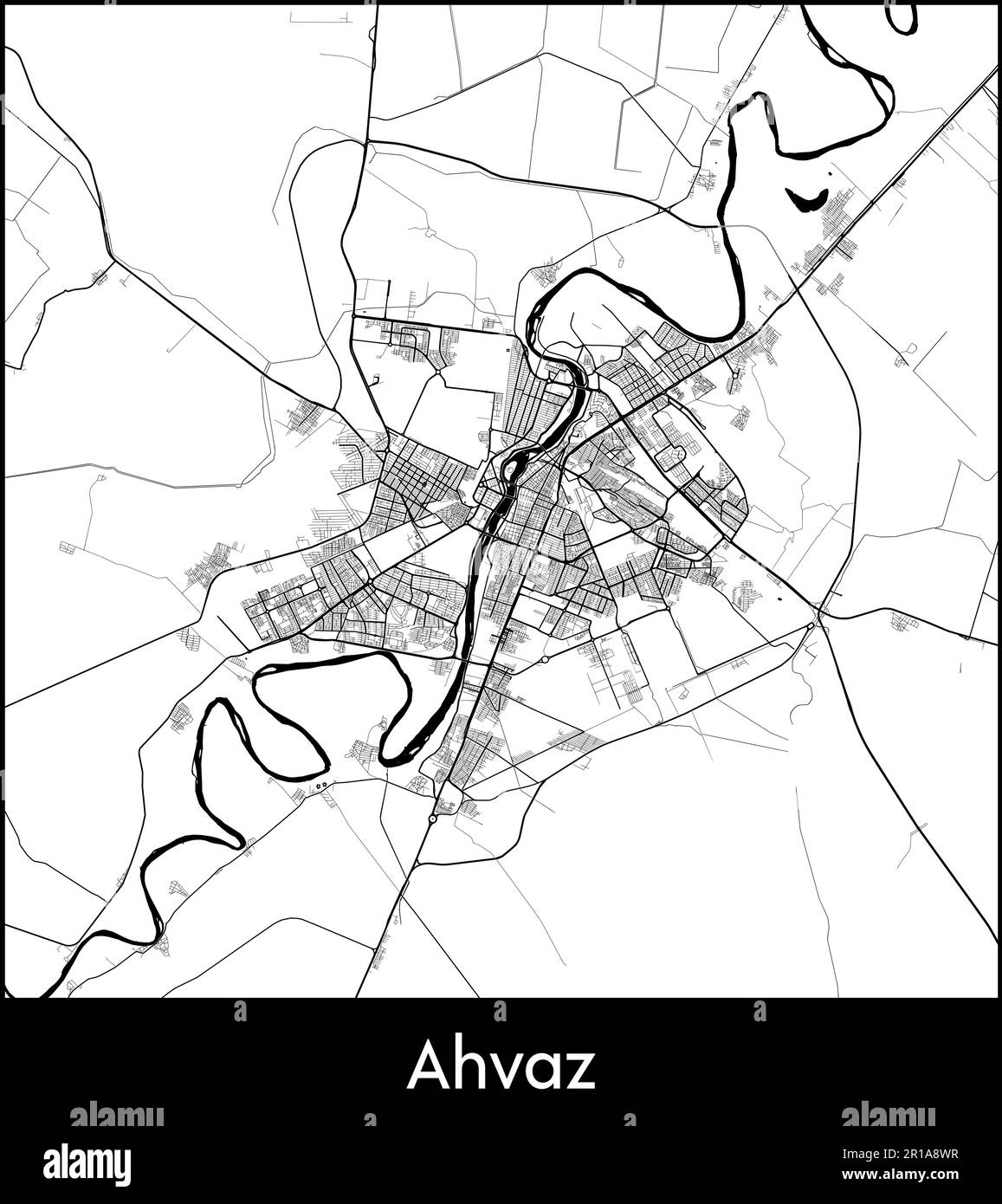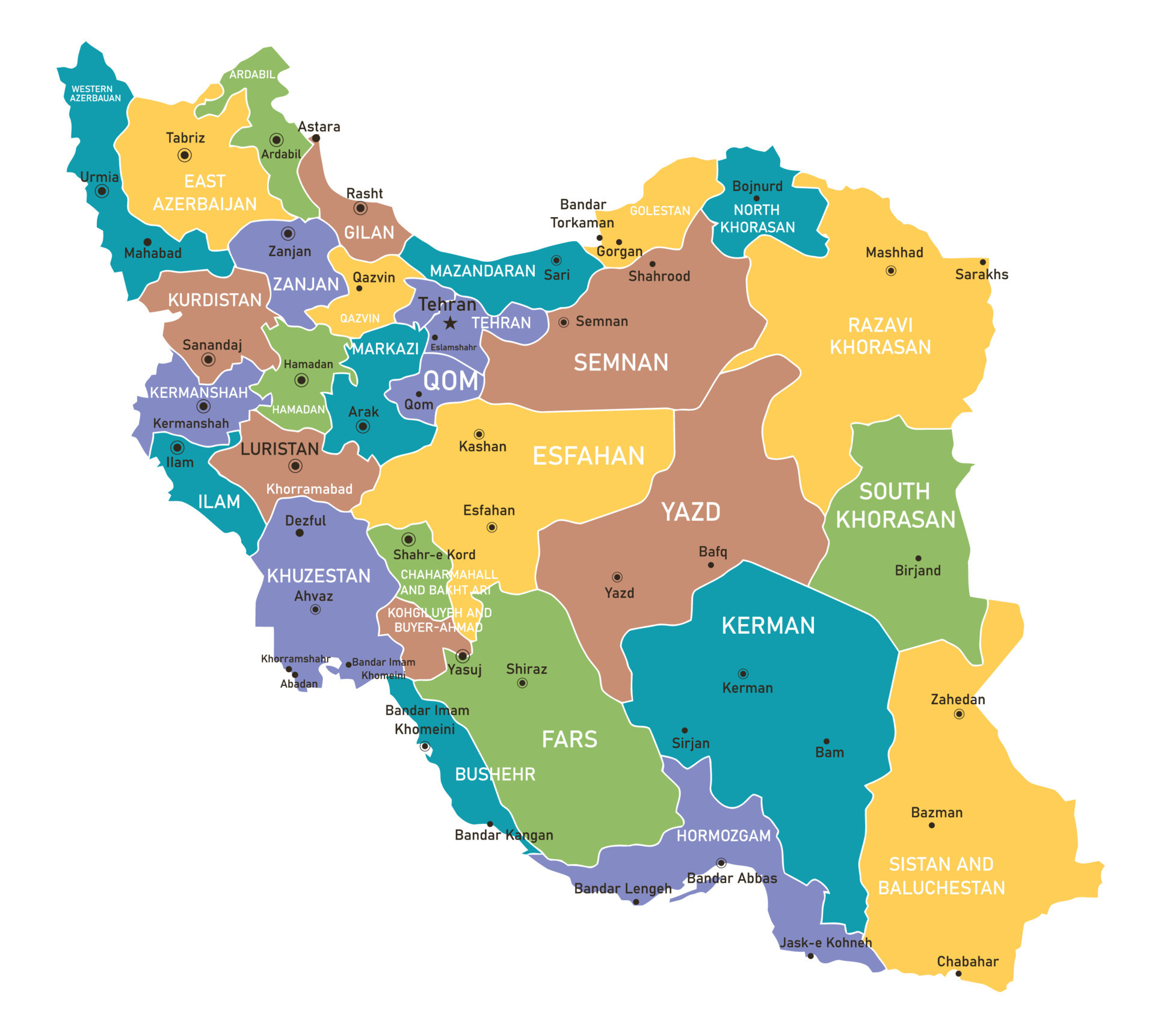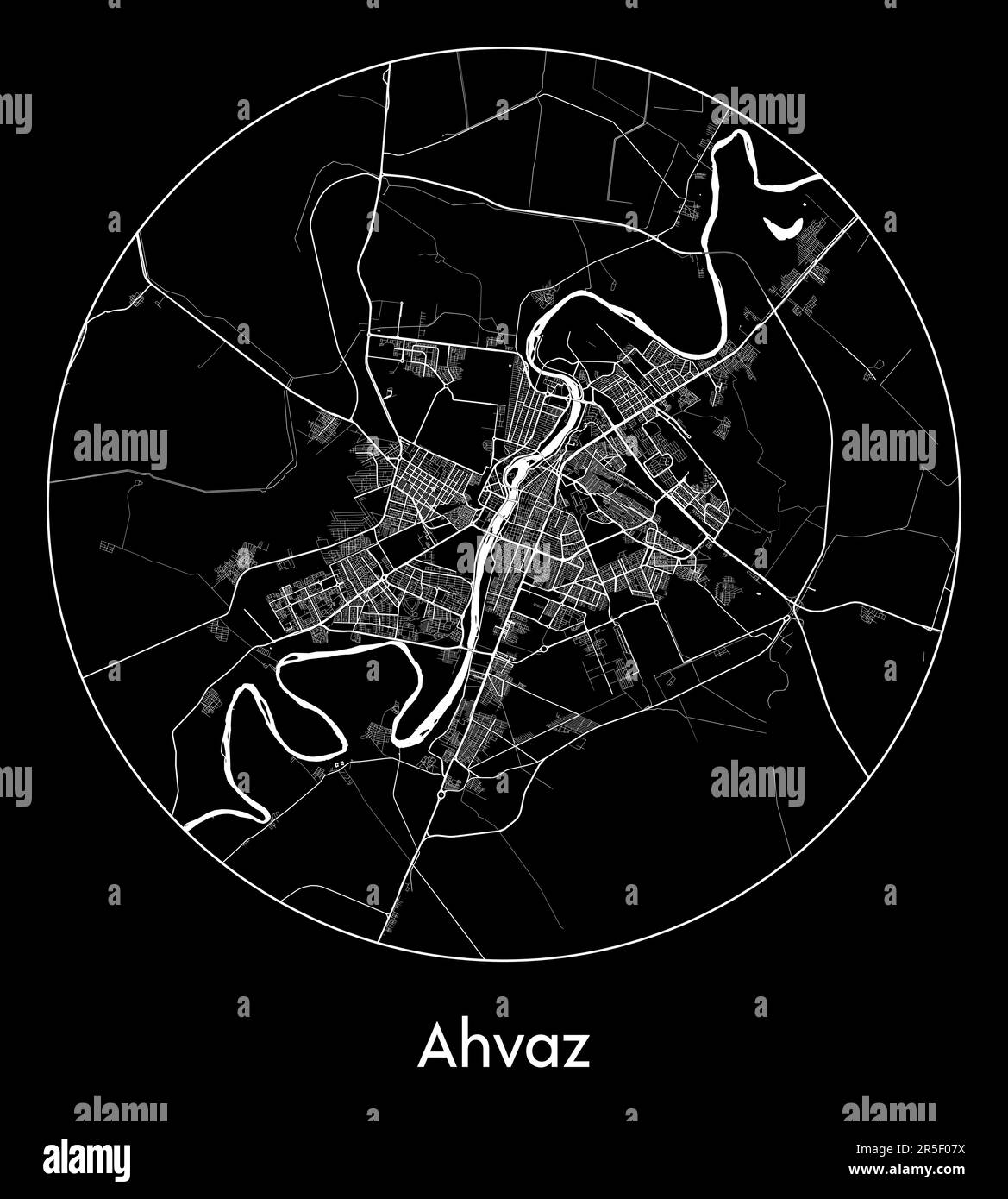Ahvaz, a name that resonates with history and resilience, stands as a vibrant testament to the enduring spirit of Iran's southwestern Khuzestan province. This bustling city, often referred to as the "City of Bridges," is more than just an industrial powerhouse; it's a cultural melting pot, a historical nexus, and a vital economic artery for the nation. Nestled on the banks of the majestic Karun River, Ahvaz offers a unique glimpse into a region shaped by ancient civilizations, oil wealth, and formidable environmental challenges.
Our journey into Ahvaz will peel back the layers of its modern facade to reveal the deep historical roots that anchor it, the economic forces that propel it forward, and the vibrant cultural tapestry woven by its diverse populace. From its strategic geographical position to its pivotal role in Iran's energy sector, understanding Ahvaz is key to comprehending the broader narrative of this fascinating part of the world.
Table of Contents
- The Geographical Tapestry of Ahvaz
- A Journey Through Ahvaz's Storied Past
- Ahvaz: Iran's Industrial and Economic Engine
- The Cultural Mosaic of Ahvaz
- Navigating the Environmental Realities of Ahvaz
- Iconic Landmarks and Urban Life in Ahvaz
- The Strategic Importance of Ahvaz
- Embracing the Future: Resilience and Vision in Ahvaz
The Geographical Tapestry of Ahvaz
Situated in the heart of Khuzestan province, Ahvaz occupies a critical geographical position in southwestern Iran. The city sprawls across the flat plains of the Khuzestan lowlands, an area historically significant for its fertile lands and strategic access points. Its most defining geographical feature is the Karun River, Iran's only navigable river, which gracefully bisects the city, lending it a distinctive character and serving as a vital lifeline. This river has been central to the city's existence for millennia, facilitating trade, providing water for agriculture, and shaping the urban landscape with its numerous bridges.
- Gina Wap Onlyfans
- Aditi Mistry Nipp Slip
- The Hounds Of Sisyphus 1
- Sydney Sweeney Nude
- Angela White Onlyfans
The climate in Ahvaz is characterized by extreme heat, particularly during the long summer months, where temperatures frequently soar well above 45°C (113°F) and can even exceed 50°C (122°F). Winters are generally mild and pleasant, offering a stark contrast to the scorching summers. This arid to semi-arid climate, combined with its proximity to desert regions, makes Ahvaz highly susceptible to dust storms. These phenomena, often originating from neighboring Iraq and Saudi Arabia, can significantly impact air quality and daily life, presenting a persistent environmental challenge for the city and its inhabitants. The flat topography, while conducive to urban expansion, also contributes to the widespread impact of these atmospheric events. Understanding this geographical context is crucial to appreciating the unique challenges and resilience of Ahvaz.
A Journey Through Ahvaz's Storied Past
The history of Ahvaz is a rich tapestry woven with threads of ancient civilizations, imperial conquests, and periods of remarkable cultural and economic prosperity. Its roots stretch back to antiquity, making it a site of continuous human settlement for thousands of years. The strategic location on a major river, coupled with its fertile surroundings, ensured its importance across various historical epochs.
From Ancient Roots to Islamic Golden Age
Evidence suggests that the area around Ahvaz was inhabited as early as the Elamite period (c. 2700–539 BC), one of the earliest civilizations in the region. Later, under the Achaemenid Empire (c. 550–330 BC), the region flourished, benefiting from its proximity to major trade routes. However, it was during the Sassanid Empire (224–651 AD) that Ahvaz, then known as Hormuzd-Ardashir, rose to prominence. It became a significant city, a center for sugarcane cultivation and a hub for textile production, particularly silk. The city's bridges over the Karun River, even in ancient times, were engineering marvels, facilitating trade and communication.
With the advent of Islam in the 7th century, Ahvaz, or "Suq al-Ahwaz" as it was then known, continued to thrive. It was an important administrative and commercial center under the Umayyad and Abbasid caliphates. Arab geographers and historians of the era frequently lauded its prosperity, its markets, and its agricultural bounty. The city was a melting pot of cultures, with a diverse population contributing to its vibrant intellectual and economic life. However, like many ancient cities, Ahvaz experienced periods of decline, particularly after the Mongol invasions and subsequent shifts in trade routes, leading to a diminished role for several centuries.
The Modern Era: Oil and Transformation
The true resurgence of Ahvaz began in the early 20th century with the discovery of vast oil reserves in Khuzestan. This pivotal event transformed the sleepy town into a rapidly developing industrial hub. The Anglo-Persian Oil Company (later BP) established significant operations in the region, leading to an influx of workers, infrastructure development, and a dramatic population increase. The construction of railways, roads, and modern bridges further cemented Ahvaz's position as a strategic center for Iran's burgeoning oil industry.
The city's growth, however, was not without its challenges. The Iran-Iraq War (1980-1988) inflicted severe damage on Ahvaz, given its proximity to the front lines. The city endured extensive bombing and shelling, leading to significant destruction and displacement. Despite the devastation, Ahvaz demonstrated remarkable resilience, undergoing a massive reconstruction effort in the post-war period. Today, the scars of war have largely healed, replaced by a modern urban landscape that continues to expand and evolve, showcasing the enduring spirit of its people. This history of transformation, from ancient prosperity to modern industrial power, defines the unique character of Ahvaz.
Ahvaz: Iran's Industrial and Economic Engine
Ahvaz stands as the undisputed economic heart of Khuzestan province and plays a pivotal role in Iran's national economy. Its significance is primarily rooted in its position as the center of Iran's oil and gas industry. The vast oil fields surrounding Ahvaz, including some of the largest in the world, make it a crucial hub for extraction, refining, and distribution. The National Iranian South Oil Company (NISOC), one of the largest oil companies globally, has its headquarters in Ahvaz, underscoring the city's central role in the nation's energy sector. This concentration of oil and gas activities has spurred the development of numerous related industries, including petrochemicals, heavy manufacturing, and engineering services.
Beyond oil, Ahvaz is also a significant industrial and agricultural center. The fertile plains of Khuzestan, irrigated by the Karun River, support extensive agriculture, with sugarcane being a major crop. The city's factories produce a wide range of goods, from steel and metal products to food processing and construction materials. Its strategic location, with access to major road and rail networks, and its port facilities on the Karun River, further enhance its role as a commercial and trade hub. The bustling markets and modern shopping centers reflect a vibrant local economy, driven by both large-scale industries and small businesses. The economic dynamism of Ahvaz is a testament to its natural resources and its strategic importance to Iran's overall economic stability and growth.
The Cultural Mosaic of Ahvaz
The city of Ahvaz is a vibrant cultural melting pot, reflecting the diverse ethnic and linguistic groups that call Khuzestan home. While the majority of the population is Persian, there is a significant Arab population, particularly in Ahvaz and the surrounding areas, which contributes immensely to the city's unique cultural identity. This blend of Persian and Arab traditions creates a distinctive social fabric, evident in the local customs, cuisine, music, and spoken dialects.
The Arabic dialect spoken in Khuzestan has its own unique characteristics, differing from other Arabic dialects found in the Middle East. This linguistic diversity is a source of cultural richness. Traditional music, often featuring instruments like the oud and kanun, resonates through local gatherings and celebrations. The cuisine in Ahvaz is also a delightful fusion, with dishes like Ghalieh Mahi (fish stew) and various types of rice dishes being popular, often spiced with local herbs and ingredients that reflect both Persian and Arab culinary influences. Hospitality is a deeply ingrained cultural value, and visitors often find themselves welcomed with warmth and generosity.
Despite its industrial facade, Ahvaz maintains a strong connection to its historical and cultural roots. Local festivals and religious ceremonies are observed with fervor, bringing communities together. The city's universities and cultural centers play a vital role in preserving and promoting this rich heritage, fostering intellectual discourse and artistic expression. This cultural vibrancy adds another layer of complexity and appeal to understanding Ahvaz, showcasing its identity as more than just an economic powerhouse.
Navigating the Environmental Realities of Ahvaz
While Ahvaz thrives as an economic engine, it also grapples with significant environmental challenges, primarily stemming from its industrial activities and geographical location. The most pressing concern is air pollution. As a major oil and gas hub, the city is surrounded by refineries, petrochemical plants, and industrial complexes, which contribute to elevated levels of airborne pollutants. Coupled with the frequent dust storms that sweep across the region, originating from the vast deserts of Iraq and Saudi Arabia, the air quality in Ahvaz can often be among the worst globally. These dust storms, sometimes lasting for days, carry fine particulate matter that poses serious health risks, including respiratory illnesses, and significantly disrupts daily life.
Water scarcity and quality are also growing concerns. The Karun River, while historically a source of life, has faced challenges due to upstream damming, agricultural runoff, and industrial discharge, impacting its flow and ecological health. Efforts are underway to address these issues, including initiatives to manage water resources more sustainably and to mitigate industrial emissions. However, the scale of the problem requires comprehensive long-term strategies. The residents of Ahvaz demonstrate remarkable resilience in the face of these environmental adversities, adapting their routines and advocating for cleaner air and water. Addressing these environmental realities is crucial for the sustainable development and well-being of the city and its future generations, ensuring that Ahvaz remains a livable and prosperous urban center.
Iconic Landmarks and Urban Life in Ahvaz
Despite its reputation as an industrial city, Ahvaz boasts several distinctive landmarks and a vibrant urban life that offers insights into its character. The most iconic features are undoubtedly its bridges spanning the Karun River. The "White Bridge" (Pol-e Sefid), officially known as the Halgheh Bridge, is perhaps the most famous. Built in 1936, it was the first suspension bridge in Iran and remains a beloved symbol of Ahvaz, particularly beautiful when illuminated at night. Other notable bridges, like the Naderi Bridge and the Seventh Bridge, also contribute to the city's "City of Bridges" moniker, each with its own architectural style and historical significance.
Beyond the bridges, the Karun River itself is a central artery of urban life. Its banks are often bustling with activity, from families enjoying evening strolls to small boats offering rides. The riverfront parks and promenades provide green spaces for relaxation and social gatherings. Ahvaz also has several historical sites, though many were impacted by the Iran-Iraq War. The city's traditional bazaars offer a sensory overload of sights, sounds, and smells, selling everything from local produce and spices to textiles and handicrafts, providing a glimpse into the local commerce and culture. Modern shopping centers and recreational facilities cater to the city's growing population, reflecting its contemporary urban development. The blend of historical structures, modern amenities, and the ever-present Karun River creates a unique urban experience in Ahvaz.
The Strategic Importance of Ahvaz
The strategic importance of Ahvaz extends far beyond its provincial boundaries, making it a critical city for Iran on multiple fronts. Geopolitically, its location in Khuzestan, bordering Iraq, has historically positioned it as a frontline city, particularly evident during the Iran-Iraq War. This proximity to the western border underscores its role in national security and defense. Militarily, Ahvaz serves as a significant base and logistical hub for Iranian forces in the region, reflecting its enduring strategic value in the broader Middle East.
Economically, Ahvaz is indispensable to Iran's national revenue and energy security. As the heart of the country's oil and gas industry, the uninterrupted operation of its facilities is vital for the national economy. The vast network of pipelines, refineries, and petrochemical plants centered around Ahvaz supplies a significant portion of Iran's energy needs and export capacity. Furthermore, its role as a major transportation hub, connecting the southern ports to the central and northern parts of the country via rail and road, facilitates the movement of goods and resources, reinforcing its economic leverage. The Karun River, navigable for a portion, also adds to its logistical advantages. This multi-faceted strategic importance ensures that Ahvaz remains a city of profound national significance, influencing both Iran's domestic policies and its regional standing.
Embracing the Future: Resilience and Vision in Ahvaz
As Ahvaz moves forward, it does so with a profound sense of resilience and a vision for the future, shaped by its rich past and present challenges. The city has repeatedly demonstrated its ability to recover and rebuild, from ancient periods of decline to the devastating impacts of the Iran-Iraq War. This enduring spirit is a defining characteristic of its people, who continue to adapt to the environmental realities of extreme heat and dust storms while striving for a better quality of life.
The future of Ahvaz hinges on sustainable development, balancing its crucial economic role with environmental protection. Efforts to modernize infrastructure, improve urban planning, and invest in green technologies are vital for mitigating pollution and managing water resources effectively. Furthermore, diversifying its economy beyond oil, by fostering growth in sectors like tourism, education, and light manufacturing, could provide greater stability and opportunities for its growing population. The city's universities are nurturing a new generation of professionals and innovators, poised to tackle these complex issues. Ahvaz, with its strategic importance, cultural depth, and the unwavering determination of its residents, is not merely a city of bridges and oil; it is a city of enduring spirit, constantly evolving and looking towards a future where prosperity and sustainability can coexist. Its narrative is a powerful testament to human adaptation and perseverance in a challenging yet deeply significant part of the world.
We hope this comprehensive exploration has offered you a deeper understanding of Ahvaz, a city that truly embodies the resilience and complexity of Khuzestan. What aspects of Ahvaz intrigue you the most? Share your thoughts in the comments below, or explore more articles on our site to delve into other fascinating regions and topics!
Related Resources:



Detail Author:
- Name : Nannie Morar Sr.
- Username : fmurphy
- Email : delia.gleichner@bogisich.net
- Birthdate : 1979-01-26
- Address : 96319 Brown Harbors Port Alysonberg, MT 16329
- Phone : 1-206-397-6824
- Company : Rolfson-Flatley
- Job : Mapping Technician
- Bio : Voluptatem fugiat iusto necessitatibus. Velit sunt magni accusamus quae accusamus. Non veritatis numquam atque necessitatibus assumenda et. Voluptate voluptatem iste dolores officiis.
Socials
instagram:
- url : https://instagram.com/aubree4603
- username : aubree4603
- bio : Et odio ab sit est cumque totam. Omnis dolore quasi quo ea. Eum eum labore sunt est aliquam.
- followers : 235
- following : 1123
facebook:
- url : https://facebook.com/atowne
- username : atowne
- bio : Nihil quo ullam provident dolore.
- followers : 6350
- following : 831
linkedin:
- url : https://linkedin.com/in/aubreetowne
- username : aubreetowne
- bio : Perspiciatis possimus esse et aut.
- followers : 6308
- following : 111
tiktok:
- url : https://tiktok.com/@aubree8063
- username : aubree8063
- bio : Quis ex delectus et nostrum provident.
- followers : 6075
- following : 124